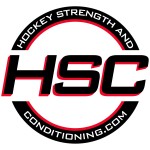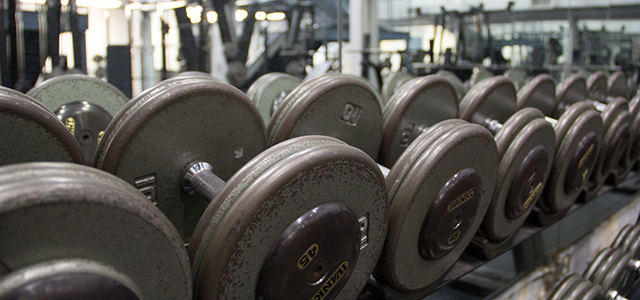Nelson/Sipotz: Is your strength training program up to date?
Darryl Nelson and Brian Sipotz are regarded as top experts in the field of strength and conditioning for ice hockey performance. Darryl has been the head strength and conditioning coach for USA Hockey’s National Team Development program since 2000 and also serves as the director of performance for Advantage Strength and Conditioning in Ann Arbor. Brian played 7 years of professional ice hockey and is the founder and strength coach of Advantage Strength and Conditioning. Darryl and Brian are also the cofounders of www.hockeystrengthandconditioning.com.
By Darryl Nelson and Brian Sipotz –
In commercial gyms and high school weight rooms all over America millions of people lift weights every day. They sit in different machines that are designed to ‘isolate’ muscles. We have all seen this before. They train back and biceps on one day and chest and triceps on the next day. In fact, the standard workout has not changed much at all since the 1960’s or 70’s. However, what else in our lives is like it was in the 1960’s or 70’s? Do we wear 60’s style clothes anymore? Do we make calls on rotary dial phones? No, instead we are wearing the latest Under Armour or Dryfit clothing and foot wear. Half of it made from recycled plastic bottles. Our phones take pictures, surf the internet and keep us up with social media. Actually, calling somebody with it is almost unheard of. These parts of our lives have changed because there is more functional technology available to us. There are also ways to make our strength training more functional as well.
We have created an environment in which athletes can participate in functional strength training that is highly organized and performance oriented. Functional strength training can simply be defined as training that prepares an athlete to perform better. It is not about trying to lift heavy weights or building big arm muscles to have a showy physique. Enhanced appearance is a positive by product of training, not the end goal. The basic goals of functional strength training are to make the athletes faster and reduce the rate of injuries. Essentially, functional training will make the athlete better prepared for competition. To better understand what constitutes functional training we must ask ourselves what hockey really demands.
 Far too many people still perform strength training exercises while seated. How many sports skills are performed sitting down? The only ones that come to mind are canoeing and kayaking. No hockey skills are performed seated! In fact, the sitting we do all day at school and work is a major contributor to low back pain. Therefore, a good strength training program should be designed to get us out of a seated posture and counteract the negatives associated with it.
Far too many people still perform strength training exercises while seated. How many sports skills are performed sitting down? The only ones that come to mind are canoeing and kayaking. No hockey skills are performed seated! In fact, the sitting we do all day at school and work is a major contributor to low back pain. Therefore, a good strength training program should be designed to get us out of a seated posture and counteract the negatives associated with it.
How many sports skills involve movement in only one joint? The answer to this question is zero. So why then do we ‘isolate’ muscles when training? Performing sports skills like skating, running, jumping, throwing, and striking require highly synchronized contractions of different muscles and muscle groups across multiple joints. Think of something as simple as swinging a golf club…what joint does not move?
How many sports are played in rigid, one dimensional environments? Again, the answer is zero. When an athlete is on a field, track, court, or ice sheet they must provide stability for themselves. This fact is the very down fall of machine based strength training programs. Body weight and free weight exercises are the most functional exercises. Free weight and body weight exercises are multi dimensional and, for the most part, require the athlete to be weight bearing. Barbells, dumbbells, kettlebells, stability balls, TRX Suspension Trainers, and medicine balls are by far the most effective pieces of strength training equipment.
Functional strength training also incorporates small amounts of instability and single extremity exercises. By doing exercises on one foot or with one arm the athletes will learn to quickly regain their stability when it has been lost. Remember, hockey is played on steel blades that are only 1/8 of an inch thick. Therefore, the ability to create force and power during instability is the highest form of strength.
Too often athletes and coaches waste time and energy by lifting with 2 feet or 2 hands at the same time. This is ineffective because it is not the way our bodies are designed to function. Again, think of sports skills and how they are performed. Almost all sports skills are performed by using the left and right sides of the body separately from each other. When shooting a hockey puck one hip joint will internally rotate while the other externally rotates. The bottom hand pushes the blade of the stick forward while the top hand pulls backward. A baseball can be thrown further with one hand than with two. In football, a field goal is kicked by planting one foot and striking the ball with the other foot.
Another major mistake often made by athletes and coaches is performing too many reps with too little rest while lifting weights. The reality is that increases in strength are made when performing a relatively low number of reps with long rests between sets. Basically, anything above 10 reps is not strength training at all.
In closing, a good strength training program should comprise lots of single extremity exercises performed for low reps with strength and power development being the primary goal. In fact, six reps and fewer with 3 minutes rest between sets should make up the majority of sets performed in a good strength training program because ice hockey is an intermittent, sprint-based sport.
Want to get stronger this off-season? The Summer Performance Strength Program begins June 15 – more information at advantagestrength.com



